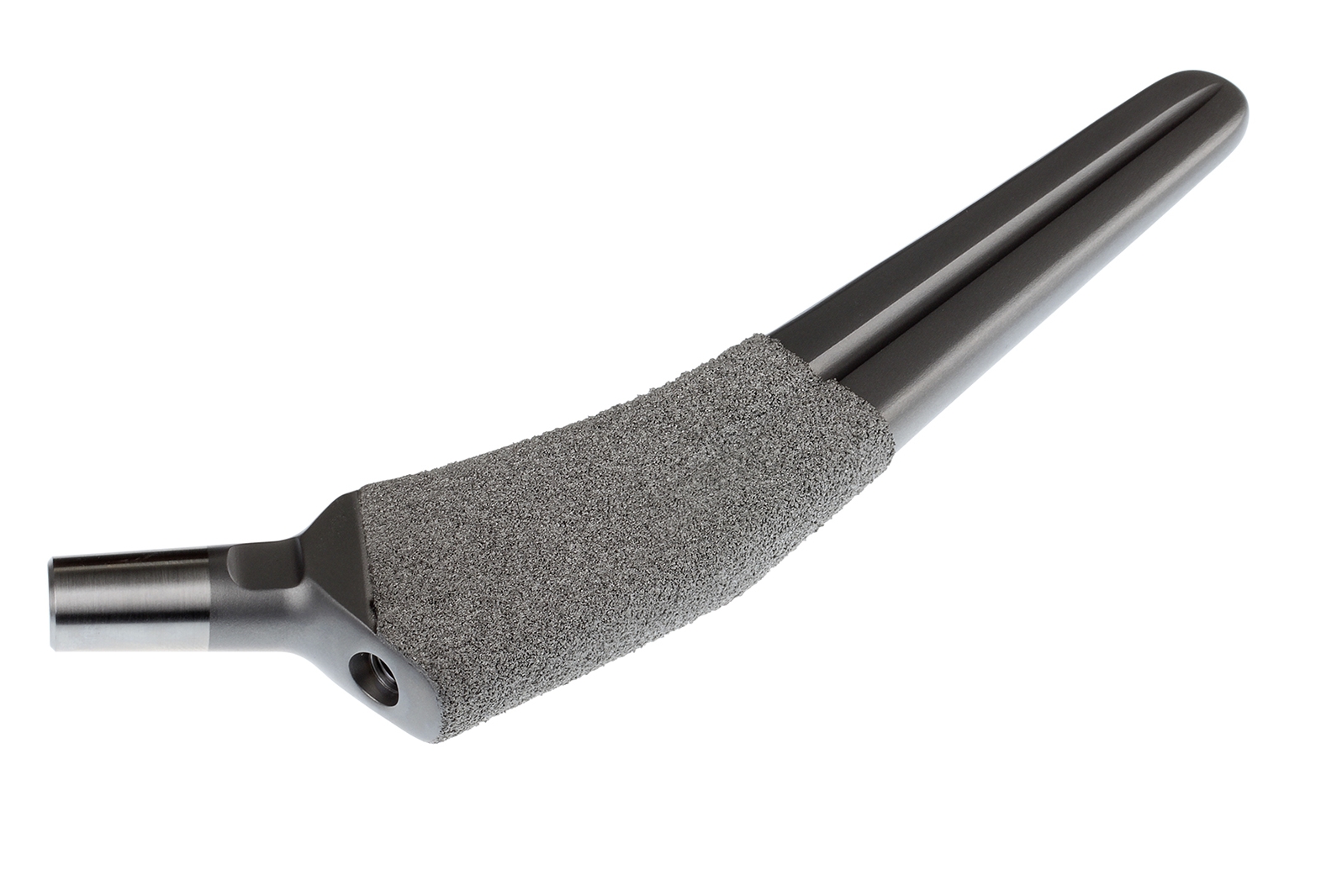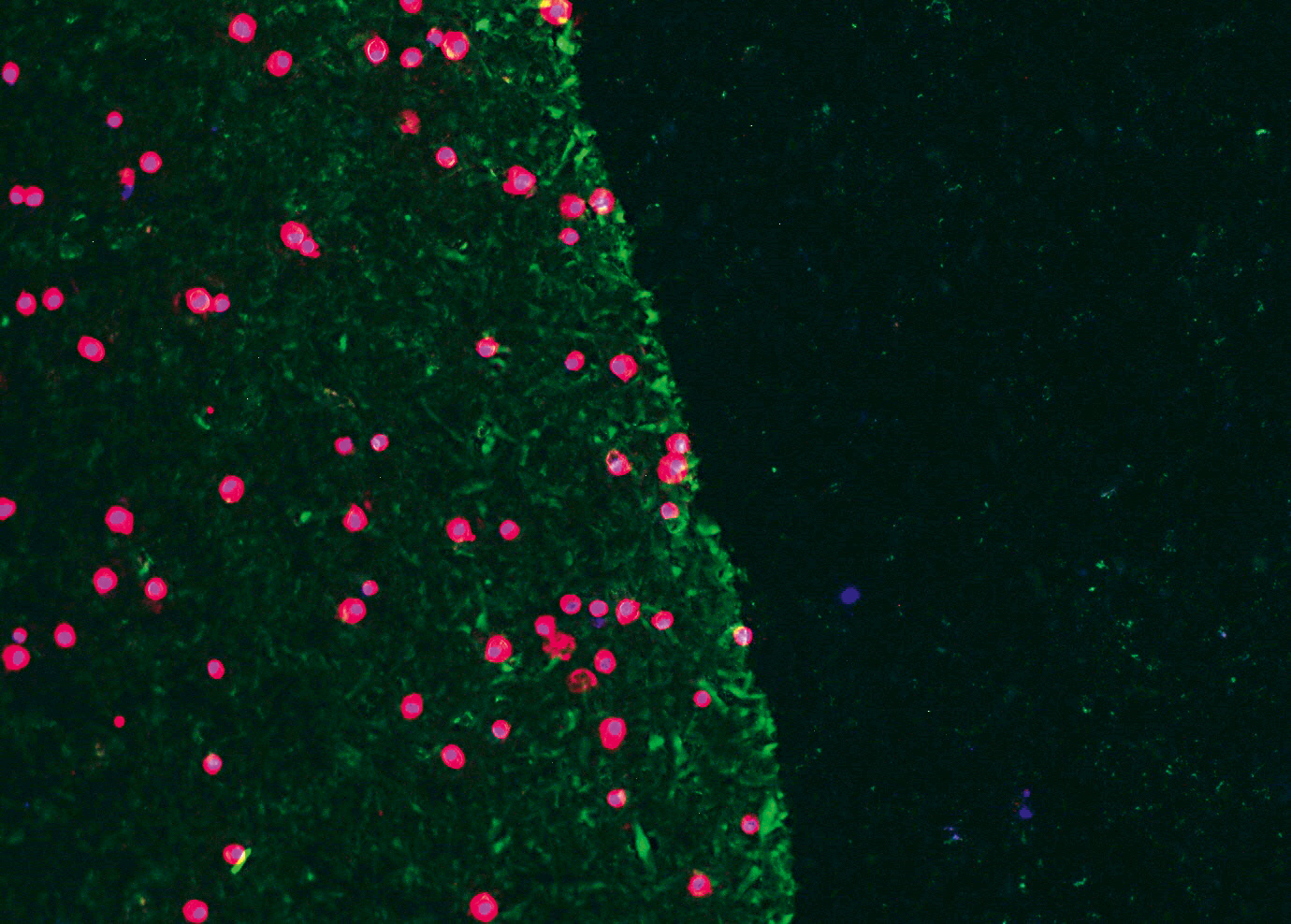After just one minute, first mesenchymal stem cells (MSC, from bone marrow aspirates) adhered to the coated surfaces (Fig. 2). On the uncoated Ti6Al4V, no adherent cells were detected at this early stage. After 30 minutes, the number of cells on both surfaces was similar, although a much greater spread of the cells and thus a higher surface coverage was frequently observed on the cross-linked albumin (Fig. 2). The effect was robust and it was demonstrated on Ti6Al4V with different surface coarseness as well as on substrates produced by laser melting using Ti6Al4V powders of different qualities. The cross-linked albumin layer could be sterilized with standard sterilization methods (gamma irradiation, electron beam) without any loss of function.
The shelf life of bone implants is often limited by severe infections occurring years after implantation. These can be caused by bacteria that reach the implant surface already during implantation and survive there in the form of a biofilm.
The functionalization of the surface of Ti6Al4V alloys with cross-linked albumin can substantially shift the often cited “race to the surface” (i.e. the competition of microorganisms and tissue cells for the colonization of surfaces) greatly in favor of MSC. We are happy to introduce the developed coatings into advanced studies for medical device companies.
 Fraunhofer Institute for Interfacial Engineering and Biotechnology IGB
Fraunhofer Institute for Interfacial Engineering and Biotechnology IGB
